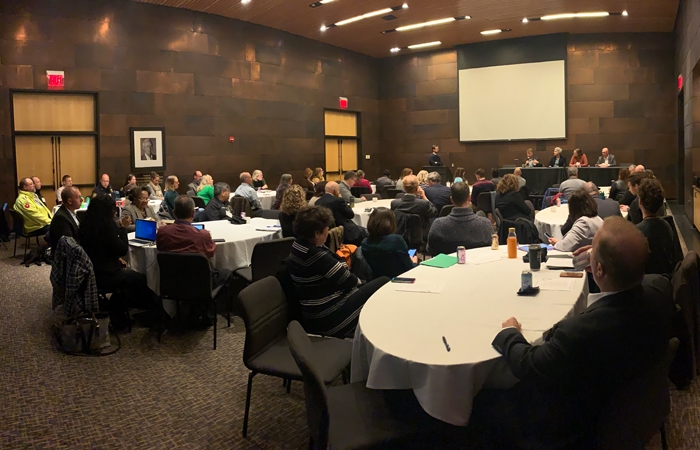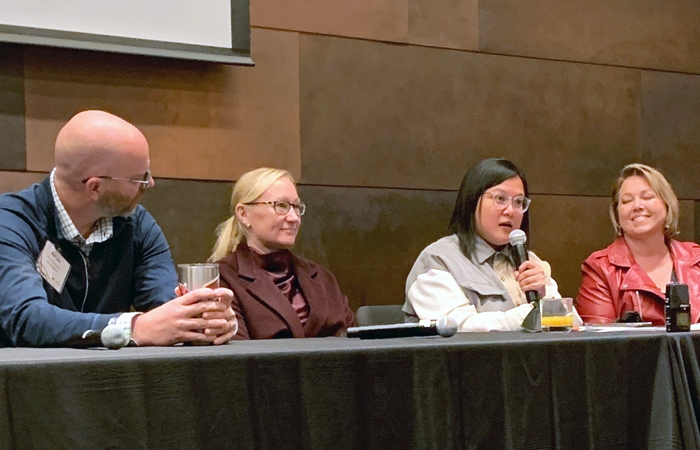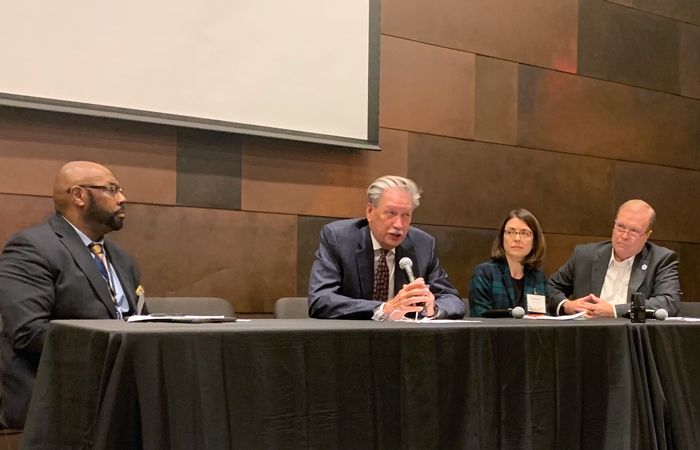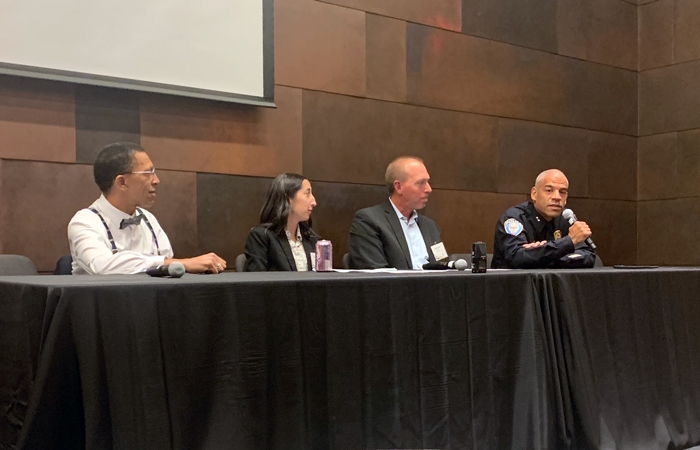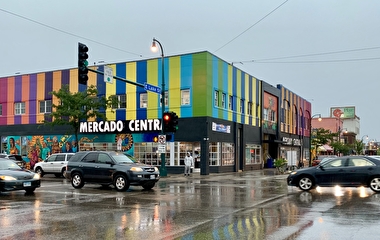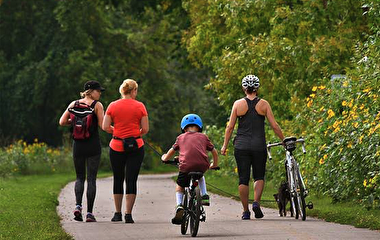On the heels of the 2023 CTS Transportation Research Conference, the Center for Transportation Studies, Metropolitan Council, and Metro Transit convened a conversation with dozens of elected and appointed officials, community members and advocates, and educators and experts to discuss the challenges and opportunities across the Twin Cities public realm.
A key aim of the convening was soliciting diverse, candid viewpoints for a shared understanding of the breadth of challenges and how they're connected across transit, parks, libraries, and other public rights-of-way and shared spaces.
Following opening remarks by CTS Director Kyle Shelton and Metropolitan Council Chair Charlie Zelle, four panels addressed topics such as working in partnership across agencies; lessons learned from ongoing outreach to schools, businesses, and residents prior to and during construction of the METRO B Line; and identifying some of the thorniest issues showing up in the public realm (spoiler alert: lack of accessible restrooms).
